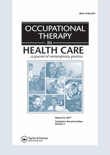
OCCUPATIONAL THERAPY IN HEALTH CARE
Scope & Guideline
Elevating Health Care Through Occupational Insights
Introduction
Aims and Scopes
- Occupational Health and Well-being:
Focuses on the role of occupational therapy in enhancing health outcomes and quality of life for individuals across various settings, including community, clinical, and educational environments. - Intervention and Rehabilitation Strategies:
Explores various intervention methods, including non-pharmacological approaches, technology-assisted therapies, and community-based programs aimed at improving functional performance and independence. - Cognitive and Mental Health:
Investigates the interplay between cognitive factors and occupational performance, emphasizing mental health interventions and the impact of psychological well-being on therapy outcomes. - Cultural and Societal Perspectives:
Examines how cultural, gender, and societal factors influence occupational therapy practices, aiming to address disparities and enhance service delivery to diverse populations. - Research and Evidence-Based Practice:
Emphasizes the importance of research methodologies, including qualitative and quantitative studies, in informing clinical practice and shaping educational frameworks for future therapists. - Innovative Practices and Technologies:
Investigates the integration of innovative technologies such as telehealth, virtual reality, and digital tools in occupational therapy to enhance service delivery and outcomes.
Trending and Emerging
- Telehealth and Remote Interventions:
The increasing prevalence of telehealth practices, particularly post-COVID-19, reflects a significant trend towards remote occupational therapy services, which enhance accessibility and flexibility for clients. - Holistic and Client-Centered Approaches:
A marked rise in research focusing on holistic, client-centered interventions highlights the importance of tailoring therapy to individual needs, preferences, and life contexts. - Interdisciplinary Collaboration:
Emerging themes showcase a growing emphasis on interdisciplinary approaches, where occupational therapy is integrated with other health professions to address complex patient needs effectively. - Focus on Aging Populations and Dementia Care:
Research addressing the needs of aging populations, particularly in the context of dementia care and cognitive rehabilitation, has gained momentum, reflecting demographic shifts and the increasing prevalence of age-related conditions. - Cultural Competence and Diversity in Practice:
There is an increasing focus on cultural competence in occupational therapy, with studies exploring the impact of cultural and societal factors on therapy practices and outcomes.
Declining or Waning
- Traditional Physical Rehabilitation Techniques:
There has been a noticeable decrease in studies solely focused on conventional physical rehabilitation methods, as the field shifts toward more holistic and integrated approaches that consider psychological and social factors. - Generalized Approaches to Occupational Therapy Education:
Research focusing on broad educational strategies for occupational therapy students appears less frequently, with a growing emphasis on specialized training and evidence-based practice methodologies. - Single-Disease Focused Studies:
Papers that concentrate exclusively on single-disease interventions are diminishing, reflecting a trend towards more comprehensive studies that address co-morbidities and complex health conditions. - Static Assessment Tools:
There is a decline in the use of traditional, static assessment tools, as the field moves towards dynamic and contextually relevant measures that capture the complexity of occupational performance.
Similar Journals
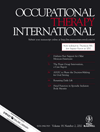
Occupational Therapy International
Empowering practitioners through innovative research.Occupational Therapy International, published by WILEY-HINDAWI, stands as a leading peer-reviewed journal dedicated to advancing the field of occupational therapy. With an ISSN of 0966-7903 and an E-ISSN of 1557-0703, this journal has been an essential resource for researchers and practitioners since its inception in 1994. As an Open Access journal since 2017, it has significantly increased accessibility to innovative research, promoting the dissemination of knowledge and best practices within the discipline. Positioned in the Q2 quartile for Occupational Therapy and ranked #9 out of 31 in Scopus for Health Professions, this journal features high-quality studies that inform clinical practice and contribute to evidence-based interventions. The globally relevant research is enriched by contributions from various perspectives, making it a vital resource for those committed to improving life quality through occupational therapy. Stationed in London, England, the journal continues to reflect its international scope with contributions spanning diverse health systems and cultural contexts, paving the way for future advancements in therapy practices.

Physiotherapy Practice and Research
Driving excellence in rehabilitation sciences.Physiotherapy Practice and Research is a pivotal journal published by IOS PRESS that focuses on the dynamic field of rehabilitation and physiotherapy. Since its inception in 2009, this journal has provided a scholarly platform for researchers, clinicians, and students to disseminate innovative findings and practical applications in occupational therapy, sports medicine, and rehabilitation sciences. Although the journal currently holds Q3 and Q4 rankings in several categories, including occupational therapy and physical therapy, its impact in fostering research collaboration and informing practice is becoming increasingly important in advancing patient care and rehabilitation outcomes. With an ongoing commitment to open-access principles, the journal welcomes original research and review articles that address contemporary challenges and emerging practices within the field. As the journal continues to evolve, it aims to engage more deeply with the global research community, unlocking vital discussions that shape the future of physiotherapy.
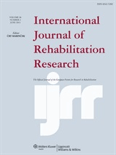
INTERNATIONAL JOURNAL OF REHABILITATION RESEARCH
Connecting research and practice to enhance rehabilitation strategies.INTERNATIONAL JOURNAL OF REHABILITATION RESEARCH, published by Lippincott Williams & Wilkins, stands as a vital resource within the fields of rehabilitation and physical therapy. With an ISSN of 0342-5282 and an E-ISSN of 1473-5660, this peer-reviewed journal has been disseminating groundbreaking research since its inception in 1978. As of 2023, it holds commendable rankings with a Q3 in Medicine (miscellaneous) and Q2 in both Physical Therapy, Sports Therapy, and Rehabilitation, as well as Rehabilitation, highlighting its significant contribution to these disciplines. The journal seeks to advance knowledge and practice in rehabilitation by serving as a platform for high-quality research, clinical studies, and theoretical discussions. It is particularly valuable for researchers, healthcare professionals, and students aiming to stay at the forefront of rehabilitation science and practice. Although not designated as open access, the journal remains accessible through various academic databases, ensuring that its content reaches a broad audience committed to improving rehabilitation therapies and outcomes.
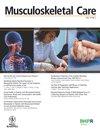
Musculoskeletal Care
Transforming Rehabilitation with Cutting-Edge InsightsMusculoskeletal Care is a prestigious journal published by WILEY, focusing on the multidisciplinary field of musculoskeletal health. With its ISSN 1478-2189 and E-ISSN 1557-0681, the journal has established itself as a vital resource for researchers, healthcare professionals, and students dedicated to the study and treatment of musculoskeletal disorders. Since its inception in 2003, it has maintained a strong reputation, achieving a Q1 ranking in Chiropractics and notable placements in other relevant categories, including Nursing and Orthopedics. The journal emphasizes the importance of evidence-based practices, innovative therapies, and collaborative research, making it essential reading for those involved in rehabilitation, sports medicine, and rheumatology. Although not an open-access journal, it remains widely accessible through academic institutions and professional organizations, contributing significantly to the ongoing discourse in musculoskeletal care and enhancing the quality of care provided to patients worldwide.
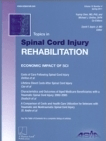
Topics in Spinal Cord Injury Rehabilitation
Transforming Rehabilitation for a Brighter TomorrowTopics in Spinal Cord Injury Rehabilitation is a premier journal dedicated to advancing research and clinical practices in the field of spinal cord injury rehabilitation. Published by the American Spinal Injury Association, this journal focuses on providing up-to-date insights and innovative strategies to enhance recovery and quality of life for individuals with spinal cord injuries. With an impressive trajectory from 1998 to 2024, it is recognized within the Q2 category for Neurology (clinical), Physical Therapy, Sports Therapy and Rehabilitation, and Rehabilitation as of 2023. Although the journal is not open access, it remains a critical resource for healthcare professionals and researchers, boasting a solid impact in the Scopus rankings that positions it among the top quartiles in its categories. Researchers, clinicians, and students alike will find invaluable knowledge within its pages, supporting the ongoing evolution of therapeutic approaches and rehabilitation methodologies. For subscriptions and more details, contact AMER SPINAL INJURY ASSOC at 9702 Gayton Rd, Suite 306, Richmond, VA 23238, United States.

Open Access Journal of Sports Medicine
Empowering Athletes Through KnowledgeThe Open Access Journal of Sports Medicine, with ISSN 1179-1543, is an esteemed publication established under DOVE MEDICAL PRESS LTD, based in the United Kingdom. Launched in 2010, this journal has committed itself to the dissemination of cutting-edge research and insights in the dynamic field of sports medicine, providing unrestricted access to its content to encourage widespread knowledge sharing. With a focus on enhancing the performance and rehabilitation of athletes, the journal's impact is reflected in its impressive 2023 Category Quartiles, ranking Q1 in areas such as Complementary and Manual Therapy and Occupational Therapy, along with Q2 positions in Orthopedics and Sports Medicine and Physical Therapy. Additionally, its noteworthy Scopus Ranks illustrate its influence within the academic community, especially within Health Professions where it ranks highly across several categories. As the journal converges its focus on impactful studies from 2019 to 2024, it remains an essential resource for researchers, practitioners, and students dedicated to advancing the science and practice of sports medicine through high-quality, peer-reviewed literature.
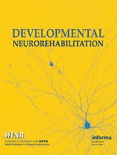
Developmental Neurorehabilitation
Transforming rehabilitation practices for young minds.Developmental Neurorehabilitation is an esteemed journal published by Taylor & Francis Inc, dedicated to advancing the field of developmental neuroscience and rehabilitation. With an ISSN of 1751-8423 and an E-ISSN of 1751-8431, this journal serves as a vital resource for researchers, clinicians, and students interested in innovative therapeutic approaches and rehabilitation techniques for children and adolescents. Since its inception in 1997, Developmental Neurorehabilitation has focused on disseminating high-quality research, contributing to a deeper understanding of recovery processes in developmental disorders, and facilitating interdisciplinary dialogue among professionals. With its recognition in Q2 and Q3 quartiles across prominent categories such as Pediatrics and Rehabilitation, it stands out as a pivotal publication in its field, boasting Scopus rankings that reflect its significant impact—ranked #53 in Rehabilitation and #139 in Pediatrics, among others. While maintaining a commitment to quality research, the journal does not currently offer open access but remains accessible through institutional subscriptions, further enriching the academic landscape with critical insights into rehabilitation methodologies for developmental challenges and promoting better clinical practices to improve patient outcomes.

Cadernos Brasileiros de Terapia Ocupacional-Brazilian Journal of Occupational Therapy
Unlocking Insights in Occupational Therapy and RehabilitationCadernos Brasileiros de Terapia Ocupacional-Brazilian Journal of Occupational Therapy (ISSN: 2526-8910) is a distinguished academic journal published by CUBA EDITORA in Brazil, dedicated to advancing research and practices in the fields of occupational therapy and rehabilitation. As an Open Access journal since 2009, it fosters wide dissemination of knowledge, allowing researchers, professionals, and students to access valuable content without barriers. The journal holds a meaningful position in the academic landscape, categorized in the Q3 quartile for Education, Health (social science), and Occupational Therapy as of 2023, underscoring its impact within these domains. With its ranking among the leading publications in its field, amidst a growing body of literature, Cadernos Brasileiros de Terapia Ocupacional serves as a vital platform for disseminating innovative research that contributes to the understanding of occupational therapy practices and their implications on health and education. Researchers aiming to publish high-quality studies in these areas can benefit from the journal’s commitment to scholarly excellence and knowledge dissemination.
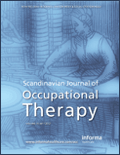
Scandinavian Journal of Occupational Therapy
Advancing evidence-based practices in occupational therapy.The Scandinavian Journal of Occupational Therapy, published by Taylor & Francis Ltd, is a leading journal in the field of occupational therapy, dedicated to advancing evidence-based practices and multidisciplinary approaches in rehabilitation and public health. With an impressive Q1 ranking in Occupational Therapy and a significant position in the Q2 category for Public Health, this journal is pivotal for researchers, practitioners, and students interested in the latest advancements and methodologies in their discipline. With a convergence of studies from 1994 to 2024, the journal provides a rich repository of peer-reviewed articles that span diverse topics within occupational therapy and its implications for public health, environmental sustainability, and holistic patient care. Readers benefit from valuable insights that not only foster academic growth but also enhance practical applications in their professional arenas. As the journal continues to grow in impact and reputation, it remains a critical resource for those committed to improving health outcomes through innovative occupational therapy practices.
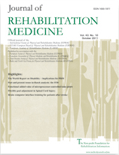
JOURNAL OF REHABILITATION MEDICINE
Elevating Patient Care Through Accessible KnowledgeJOURNAL OF REHABILITATION MEDICINE, published by the FOUNDATION REHABILITATION INFORMATION in Sweden, stands as a leading platform for the dissemination of groundbreaking research in the field of rehabilitation. With an impact factor that places it in the Q1 category for Physical Therapy and Rehabilitation and a noteworthy Q2 ranking in Sports Science and Medicine (miscellaneous), this journal serves as an essential resource for researchers, clinicians, and students dedicated to improving patient care and rehabilitation outcomes. As an Open Access publication since 2001, it ensures that knowledge is widely accessible, promoting collaborative efforts across the global rehabilitation community. Aiming to bridge the gap between research and clinical practice, the journal covers a comprehensive range of topics, providing a vital forum for innovative studies that advance the understanding and effectiveness of rehabilitation therapies. As it approaches its convergence into 2024, the JOURNAL OF REHABILITATION MEDICINE continues to be a cornerstone for all those committed to advancing rehabilitation sciences.